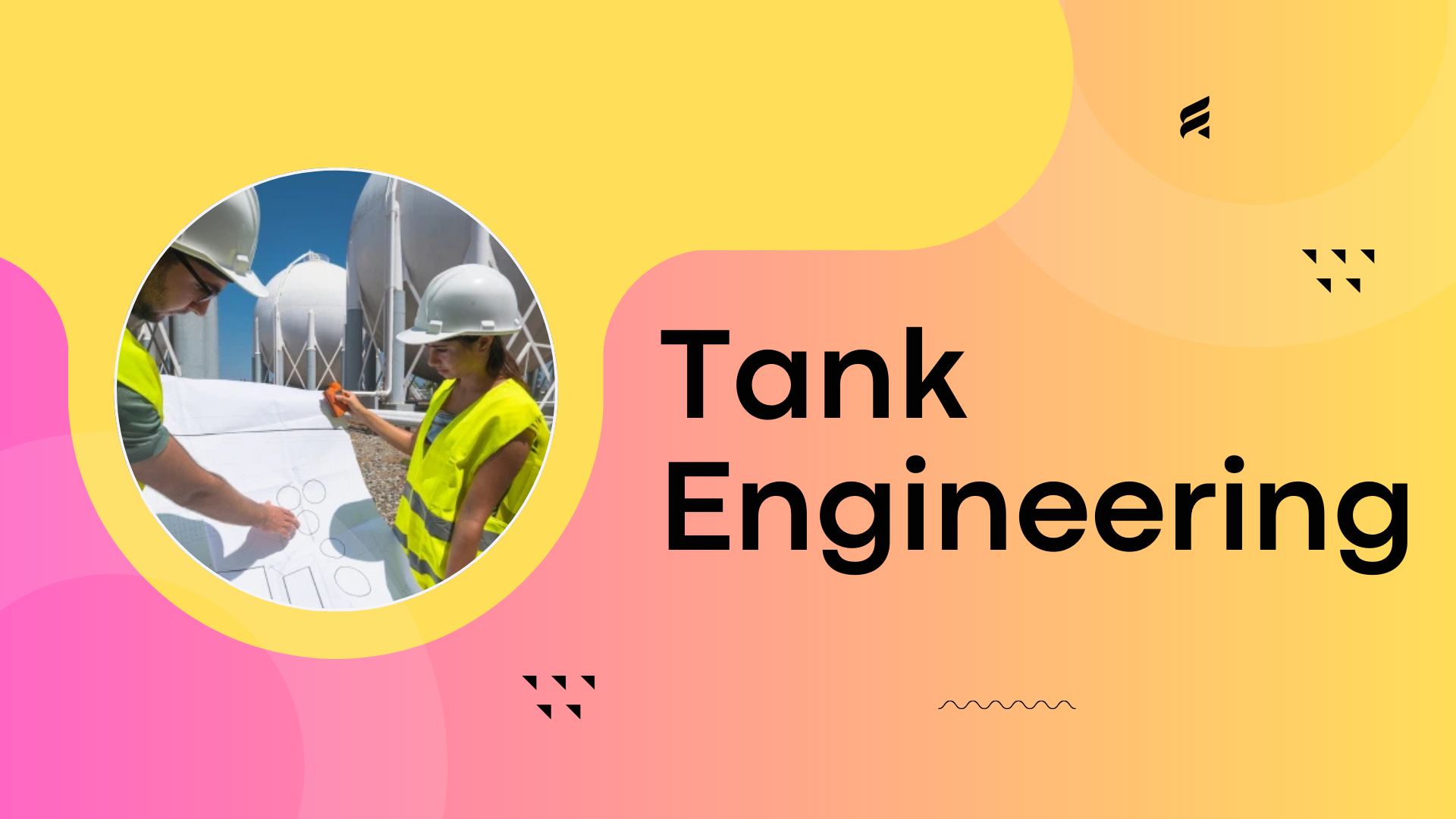Tank Engineering: Innovations, Safety, and the Future of Tank Design

Tank engineering is essential to the safe handling and storage of liquids, gases, and bulk materials in the field of industrial infrastructure. Tanks are crucial structures that require exact engineering, longevity, and adherence to international standards, whether they are used in chemical plants, food processing businesses, water treatment facilities, or oil and gas refineries. As concerns about sustainability, efficiency, and environmental safety have grown, modern tank design has changed dramatically to satisfy industry demands while abiding by stringent laws.
The significance of tank engineering, the elements that influence tank design, the difficulties engineers encounter, and the advancements influencing this field's future are all covered in this blog.
What is Tank Engineering?
The planning, constructing, building, and maintenance of tanks used to store liquids, gasses, or solids is referred to as tank engineering. From tiny containers for food-grade items to enormous storage tanks for petroleum products or liquefied natural gas (LNG), tanks are available in a variety of sizes and configurations.
Engineers in this field work to ensure that tanks:
a. Can safely store materials under varying pressure and temperature conditions.
b. Meet quality and safety standards, such as API (American Petroleum Institute) and ASME (American Society of Mechanical Engineers).
c. Are designed for long-term durability and efficiency.
d. Minimize environmental risks, such as leaks or emissions.
Thus, tank engineering is not just about constructing storage containers—it is about ensuring safety, functionality, and sustainability in every project.
The Importance of Tank Design
Tank design, which establishes the structure's strength, usefulness, and efficiency, is an essential component of tank engineering. Tanks with poor design have the potential to collapse catastrophically, causing spills, explosions, or environmental harm over time.
Key aspects of effective tank design include:
1. Material Selection
a. The material used depends on the substance being stored. For instance:
b. Stainless steel is common for food, pharmaceuticals, and water storage.
c. Carbon steel is used for petroleum and chemical products.
d. Concrete tanks are used for large-scale water storage.
2. Shape and Structure
a. Cylindrical vertical tanks are the most common due to their stability and efficient load distribution.
b. Spherical tanks are often used for high-pressure gases like LPG because they evenly distribute stress.
c. Rectangular tanks are used in certain industrial and agricultural applications but are less efficient for large-scale use.
3. Capacity and Pressure Requirements
Tank design considers volume, internal pressure, external loads (like wind or seismic activity), and temperature fluctuations.
4. Safety Systems
Modern designs include advanced venting systems, corrosion protection, and double-wall containment to prevent leaks or spills.
Types of Tanks in Engineering
Tank engineering covers a wide variety of tanks designed for specific industrial purposes:
a. Atmospheric Storage Tanks: Used in refineries and chemical plants for liquids stored at ambient pressure.
b. Pressurized Tanks: Designed for gases and volatile liquids under pressure, such as propane or LNG.
c. Cryogenic Tanks: Specialized for storing materials at extremely low temperatures, like liquid nitrogen or oxygen.
d. Water Storage Tanks: Used in municipal and agricultural sectors for potable or non-potable water.
e. Septic and Wastewater Tanks: Essential in environmental engineering for sewage and industrial wastewater treatment.
Each type requires unique design considerations, ensuring safety and compliance with industry standards.
Challenges in Tank Engineering
Despite advancements, tank engineering faces a number of challenges:
1. Corrosion and Material Degradation
Exposure to chemicals, moisture, and extreme temperatures can weaken tank materials. Engineers must employ coatings, linings, or select corrosion-resistant materials.
2. Environmental Concerns
Leaks and spills can lead to soil contamination, air pollution, or water resource damage. Designing tanks with secondary containment systems has become a priority.
3. Structural Safety
Natural disasters like earthquakes, storms, or floods can cause tank failures. Designs must account for local geotechnical and environmental conditions.
4. Cost Efficiency
Balancing safety, durability, and cost is one of the toughest tasks. Clients demand efficient tank design without compromising on reliability.
5. Regulatory Compliance
Tank engineering must comply with global and local codes such as API 650 (for welded tanks), API 620 (for low-pressure tanks), and ASME Section VIII (for pressure vessels).
Innovations in Tank Design and Engineering
The future of tank engineering is being shaped by technological advancements and sustainable practices. Some key innovations include:
1. Smart Tanks with IoT Integration
Tanks are now equipped with sensors to monitor pressure, temperature, liquid levels, and structural integrity in real time. This reduces human error and ensures proactive maintenance.
2. Advanced Materials
Composite materials and fiber-reinforced plastics are being used to improve durability, resist corrosion, and reduce weight.
3. Double-Walled and Secondary Containment Systems
To prevent leaks and spills, especially in the oil and chemical industries, tanks now feature double walls and external containment basins.
4. 3D Modeling and Simulation
Engineers use advanced software to simulate stress, temperature effects, and load distribution before actual construction, making tank design safer and more efficient.
5. Sustainable Practices
Eco-friendly coatings, renewable energy-powered heating systems, and recyclable materials are being introduced to minimize the environmental impact of tanks.
Conclusion
In order to guarantee the secure and effective storage of liquids, gases, and bulk materials throughout industries, tank engineering is an essential area. Engineers are pushing the envelope to develop safer and more sustainable solutions in everything from tank design and material selection to sophisticated safety systems and cutting-edge monitoring technologies.
It is impossible to overestimate the significance of tank design, which forms the basis of storage infrastructure's dependability, efficiency, and safety. Tank engineering will keep innovating to provide a safer and more sustainable future as industries encounter new opportunities and challenges.
- AI
- Vitamins
- Health
- Admin/office jobs
- News
- Art
- Causes
- Crafts
- Dance
- Drinks
- Film
- Fitness
- Food
- Spiele
- Gardening
- Health
- Startseite
- Literature
- Music
- Networking
- Andere
- Party
- Religion
- Shopping
- Sports
- Theater
- Wellness


